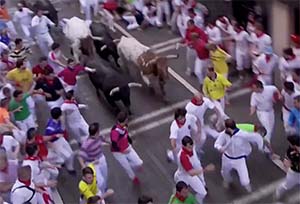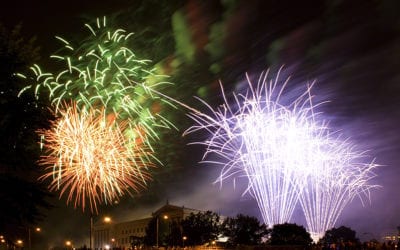Highlighting the Holidays: A Camel Line Item
I got this from the Library of Congress, the world’s repository for everything in print, on air, or recorded. Somethings they have tucked away are amazing, like George Washington’s ledger book noting the payment for a camel. I heard the story years ago when I visited Mt. Vernon in Alexandria, Virginia. But, now here is the proof that the camel story wasn’t a fake. Here it is, courtesy of the Library of Congress blog.
A camel walked into Mount Vernon … sounds like the beginning of a rather offbeat joke. However, such is not the case. On Dec. 29, 1787, our nation’s soon-to-be first president, at home on his estate in Alexandria, Virginia, played host to a rather exotic animal for the holidays.
I first heard this story from a friend of mine who works at Mount Vernon. Every year, the estate brings in Aladdin the camel for its Candlelight Christmas festivities in an attempt to recreate life and experiences from Washington’s time. I thought it quite fascinating that Washington had such a tradition and figured that perhaps he employed a live nativity for his 18th century holiday celebrations or brought the camel in for the enjoyment of his step-grandchildren, George and Nelly Custis.

His entry for Dec. 29 reveals a payment of 18 shillings to “the man who brought a camel from Alex. for a show.” (right)
According to Mary V. Thompson of Mount Vernon, there is nothing in the Library’s records that indicate how the camel ended up at the estate or truly why.
“It might be that Washington learned there was a camel in town and invited the handler to bring it to his plantation,” she said. “It is also just as likely that the pair arrived in Alexandria, learned that Washington lived 10 miles or so down the road and, knowing he was famous and probably had money, decided to make the trip on their own.”
While the records are certainly no secret among scholars, their formidable financial formats make them somewhat complicated and hard to decipher. They’ve been seldom used in comparison to Washington’s diaries and correspondence. Currently, the University of Virginia is embarking on a project to publish them in book and digital form.
What these records do reveal are the interesting spending habits of our first president. During his life, Washington was responsible for millions of dollars in public and private expenditures for his household, his wife Martha’s estates, his agricultural and milling business enterprises, his land investments, the Virginia militia, the Continental Army and the federal government.
“On one hand he’s a farmer, on the other a colonial. He thinks of himself as English, so he wants to be ‘fashionable,’” says Julie Miller, early American historian in the Manuscript Division.
Washington was particularly concerned with fashionable appearances and, according to Miller, wrote about it so often that he abbreviated the word to “fash.” He exported his tobacco crop to London to pay for the luxuries and other goods he would import, such as gloves, ribbon, fabric, china, even delicate Chinese table ornaments for his home in Philadelphia. There’s an item for a “pair of gloves for Kennedy to wear.” According to Miller, the gloves were for one of Washington’s slaves to better handle said ornaments.
“He was the first president of the United States, so he wanted to present well to foreign diplomats,” she added.
Washington also kept records of his charitable donations, including money given to beggars, refugees and needy family members. A curious item to note is a lottery ticket he bought from a soldier, who was selling pieces of land in order to raise money for himself.
“His spending was typical for a man of his ilk, but because he was wealthy, he bore the brunt of it,” said Miller. “He was at the center of his neighborhood, and a lot of people relied on him.”

Washington’s financial accounts are full of nuggets of information that further add to our understanding of the man himself. While we may view him as a larger-than-life historical figure, he was simply a man of his time. I even found line items of money exchanged playing cards and billiards!
A further look into Washington’s financial records can be found in these blog posts: on his weaving workshop and his business dealings with women.

Charlie Leocha is the President of Travelers United. He has been working in Washington, DC, for the past 14 years with Congress, the Department of Transportation, and industry stakeholders on travel issues. He was the first consumer representative to the Advisory Committee for Aviation Consumer Protections appointed by the Secretary of Transportation from 2012 through 2018.



